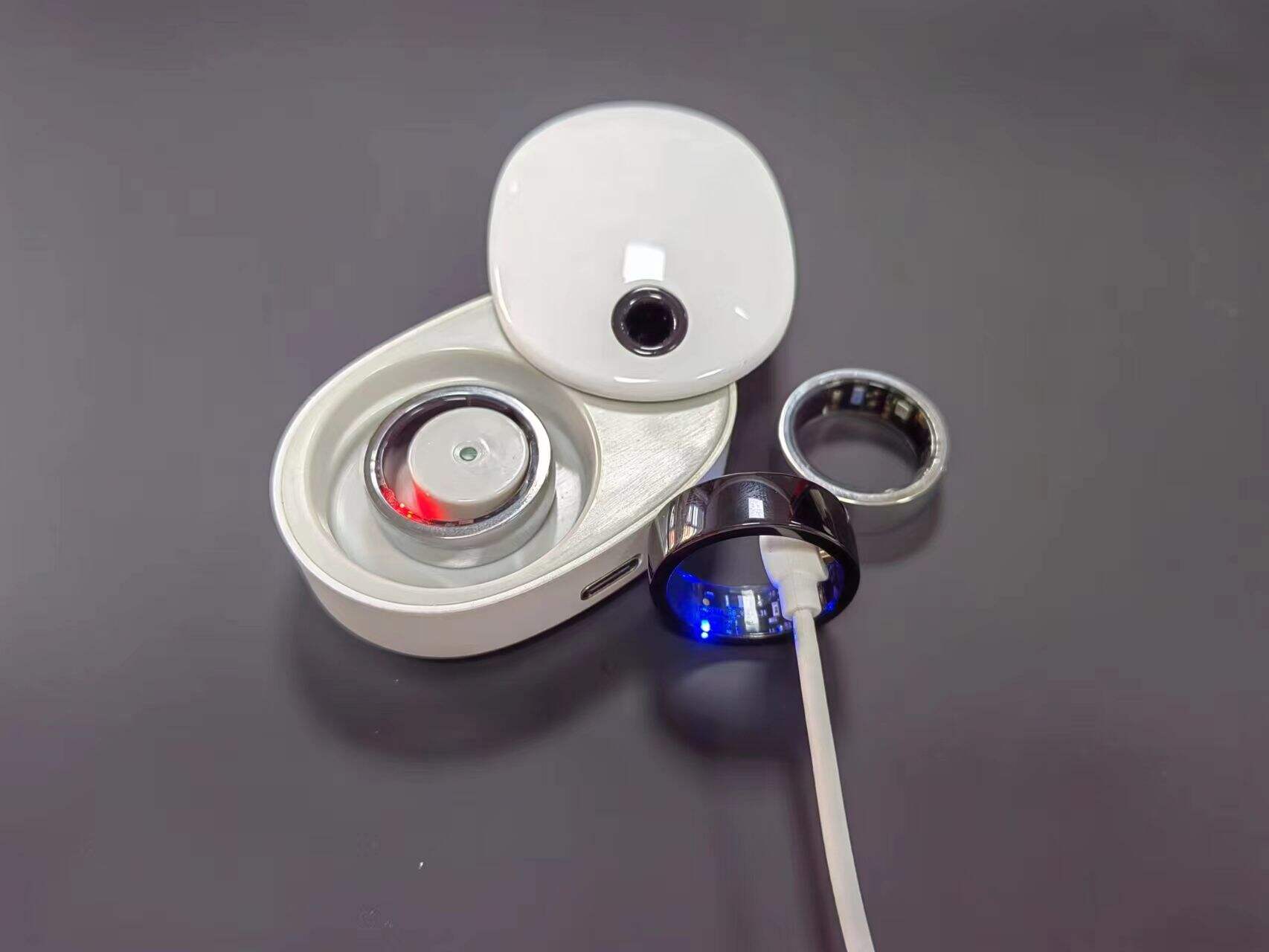Critical Features to Look for in Camera Lens Connectors for Precision Equipment
Accuracy and Repeatability in Connector Performance
Precision Alignment Mechanisms for Consistent Lens Positioning
Precision alignment mechanisms play a crucial role in maintaining the accuracy of lens positioning, which is essential for optimal connector performance. These mechanisms ensure that lenses are precisely aligned, minimizing optical aberrations and enhancing image clarity. Techniques such as optical alignment systems are central to achieving this level of precision. For example, in the medical imaging industry, precise lens alignment leads to accurate diagnostic results. Additionally, in high-speed photography, proper alignment allows for clear capture of fast-moving subjects. Such alignment techniques not only improve performance but also ensure consistency, allowing photographers and industries to rely on their equipment for predictable and repeatable outcomes.
Testing Standards for High-Repeatability Pogo Pin Connectors
Testing standards play a critical role in the performance of pogo pin connectors, especially concerning high-repeatability metrics. These standards ensure that connectors can deliver consistent performance over long periods, reducing the risk of failure in demanding applications. For instance, IEEE and IEC standards provide guidelines that validate the reliability of pogo pin connectors through rigorous testing methods. High-repeatability is particularly important in sectors like telecommunications, where connectors must function reliably despite repeated connections and disconnections. Ultimately, adhering to established testing standards ensures that these connectors meet the necessary performance benchmarks, instilling confidence in their use for crucial applications.
Impact of Connector Tolerance on Imaging Consistency
Connector tolerance significantly affects imaging consistency and quality, as it dictates the precision with which components meet and align. Tight tolerances are crucial in applications requiring high-resolution imagery, where even minimal deviations can lead to significant quality loss. Loose tolerances may result in connection failures or compromised signal integrity, adversely affecting imaging results. Data indicate a strong correlation between tolerance levels and imaging performance; a study in optical systems demonstrated that stricter tolerance control leads to sharper and more accurate images. Therefore, manufacturers must carefully calibrate tolerance levels to ensure that connectors function optimally, maintaining imaging consistency across various applications.
Signal Integrity for Clear Imaging Results
Shielding Techniques in Magnetic Connectors to Block Interference
Shielding techniques in magnetic connectors are essential for mitigating electromagnetic interference (EMI), ensuring clear and noise-free imaging results. Various methods such as metal housings, ferrite beads, and conductive coatings are employed to shield connectors from external EMI sources. These techniques maintain signal integrity by blocking unwanted signals that could distort images or disrupt transmission. Devices like medical imaging systems and advanced photography equipment benefit significantly from these advanced shielding techniques, maintaining high-quality imaging outcomes even in EMI-rich environments.
High-Current Pogo Pins for Stable Power Delivery
High-current pogo pins are vital for ensuring stable power delivery to imaging systems, thereby maintaining signal fidelity. These special pins are designed to handle higher currents without overheating or signal loss, which is crucial for complex imaging tasks. The robust design of high-current pogo pins allows them to maintain a stable power flow, reducing the chances of disruptions that might otherwise degrade imaging performance. In performance comparisons between standard and high-current pin configurations, the latter exhibits superior power management and consistency, enhancing the overall reliability of imaging systems.
Signal Loss Prevention in High-Frequency Applications
Signal loss in high-frequency applications can severely impact imaging clarity, making prevention techniques vital. Challenges include maintaining signal strength across extended distances or through various connectors. Technologies like impedance matching and low-loss materials help reduce signal attenuation, ensuring the imaging system functions optimally. Studies in telecommunications sectors highlight how these strategies enhance performance, emphasizing their critical role in maintaining clear imaging results. Techniques such as using high-performance cables and connectors adapted for high-frequency conditions exemplify proactive measures for preserving signal integrity in demanding applications.
Long-Term Reliability of Camera Lens Connectors
Durability Testing for 50,000+ Mating Cycles
Ensuring the long-term reliability of camera lens connectors requires rigorous durability testing protocols, especially for those designed to endure over 50,000 mating cycles. The goal of these tests is to simulate the wear and tear connectors face in real-world scenarios, significantly reducing the likelihood of failure during regular use. By subjecting connectors to these examinations, manufacturers can predict their lifespan and performance during extended periods of use. Statistics show that connectors not tested for high mating cycles often experience higher failure rates, which directly impacts device functionality and longevity.
Anti-Corrosion Coatings for Harsh Environments
In challenging environments, the necessity for anti-corrosion coatings on connectors becomes crucial. These coatings protect connectors from the detrimental effects of moisture, salt, and other corrosive elements. Various types of coatings—such as nickel or gold plating—are available, each offering specific benefits depending on the environmental conditions encountered. For instance, marine and aerospace industries frequently rely on these coatings to ensure connectors maintain their structural integrity against saltwater and high-altitude atmospheric conditions. The resilience provided by effective anti-corrosion coatings is indispensable in guaranteeing the longevity and reliability of connectors employed in such demanding sectors.
Thermal Stability in Extreme Operating Conditions
Extreme temperatures can significantly affect connector performance and reliability, making thermal stability a critical factor in their design. Standard testing environments, replicating conditions from sub-zero to scorching temperatures, help evaluate a connector's endurance and operational integrity. Technologies such as advanced materials and enhanced design architectures improve connectors for thermal stability, ensuring they function optimally across varied temperature ranges. Anecdotal evidence from industries, such as automotive and aerospace, underscores the importance of thermal stability; connectors tested in these environments consistently demonstrate superior operational reliability, proving their capability to withstand harsh thermal stresses in real-world applications.
Incorporating these advanced features into camera lens connectors ensures that they deliver consistent and reliable performance, even under the most demanding conditions.
Material Quality and Environmental Resistance
Gold-Plated Contacts vs. Standard Brass in Pogo Pin Connectors
Gold-plated contacts in pogo pin connectors offer superior performance compared to standard brass, particularly regarding electrical conductivity and corrosion resistance. Gold is an excellent conductor, providing lower resistance and enhancing signal transmission. Its corrosion resistance significantly prolongs the lifespan of connectors, especially in humid or salty conditions. This performance advantage comes with increased cost, as gold-plating is more expensive than brass. However, the long-term value is often justified by reduced maintenance costs and prolonged connector life. Industry research supports these benefits, with empirical data showing that connectors with gold-plated contacts exhibit fewer failures and longer service life under rigorous conditions.
IP-Rated Sealing for Dust/Liquid Protection
IP ratings are critical for ensuring connector sealing against dust and liquids, thus safeguarding their functionality across various environments. An IP rating indicates the degree of protection provided by an enclosure against foreign objects and moisture intrusion. Ratings like IP67 and IP68 are suitable for connectors used in outdoor and industrial applications, offering high protection levels. For instance, in adverse conditions like heavy rain or dusty factories, connectors with high IP ratings can prevent ingress, maintaining operational reliability. Case studies highlight connectors under such ratings successfully functioning in challenging environments, underscoring their importance for moisture and dust protection.
UV-Resistant Polymers for Outdoor Precision Equipment
Utilizing UV-resistant polymers in outdoor precision equipment is crucial to prevent material degradation due to prolonged UV exposure. Standard materials can deteriorate quickly when exposed to UV rays, leading to performance issues or structural failures. UV-resistant options significantly enhance longevity by maintaining integrity and appearance, notwithstanding intense sunlight. Data indicates these polymers increase service life and offer cost-effectiveness by minimizing frequent replacements and repairs. Such durability is vital for connectors used in outdoor imaging systems, ensuring they remain resilient and reliable, even under continuous exposure to harsh UV conditions.
Compatibility with Precision Imaging Systems
Multi-Mount Adaptability for Cross-Platform Integration
In modern imaging systems, multi-mount adaptability is crucial for achieving seamless cross-platform integration. This adaptability ensures that camera gear can connect with various components without compatibility issues, enhancing the system's overall versatility. Several mounting solutions exist to address this need, including plate and dovetail systems, quick-release mechanisms, and universal mounts. These options offer different degrees of flexibility and security, allowing photographers and videographers to switch between setups effortlessly.
Compatibility with Precision Imaging Systems
Ensuring compatibility with precision imaging systems is crucial as technology continues to evolve. The challenge lies in integrating modern connectors with older equipment that may not have the same specifications. Solutions have been developed to address this need, including conversion kits and adapters that facilitate seamless connectivity between old and new components. Successful system upgrades lead to significant improvements in performance and reliability. Organizations that use these solutions report fewer compatibility issues, creating a more harmonious integration of technology.
Ensuring Optimal Connection for Specialized Optics
Lens connectors designed for specialized optics are tailored to meet the unique demands of specific imaging applications. These configurations enhance performance by ensuring optimal connection and signal transmission between components. Case studies highlight innovative setups where these tailored configurations have been successfully deployed, demonstrating improvements in both adaptability and overall system performance. By investing in such specialized configurations, manufacturers can expect to see improvements in both adaptability and overall system performance, ensuring reliable operations even in challenging environments.
Hot News
-
Challenges for Pogo pin manufacturers in the AI era
2023-12-14
-
Teach you how to understand Pogo pin spline structure
2023-12-14
-
What products can Pogo pin be used in?
2023-12-14
-
How to choose Pogo pin connector
2023-12-14

 EN
EN
 AR
AR
 BG
BG
 HR
HR
 CS
CS
 DA
DA
 NL
NL
 FI
FI
 FR
FR
 DE
DE
 EL
EL
 HI
HI
 IT
IT
 JA
JA
 KO
KO
 PL
PL
 PT
PT
 RU
RU
 ES
ES
 SV
SV
 TL
TL
 IW
IW
 ID
ID
 LV
LV
 SR
SR
 UK
UK
 VI
VI
 GL
GL
 HU
HU
 TH
TH
 TR
TR
 AF
AF
 MS
MS
 SW
SW
 GA
GA
 CY
CY
 IS
IS
 BN
BN
 BS
BS
 NE
NE





